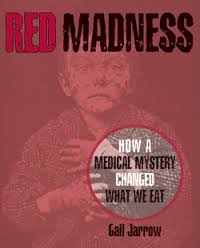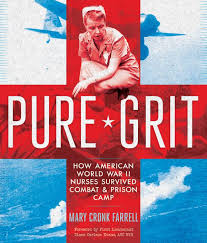Jarrow, Gail. Red Madness: How a Medical Mystery Changed What We Eat. Honesdale: Calkins Creek, 2014. 978-1-59078-732-8. $14.46. 192p. Gr. 6 and up.
The medical mystery of pellagra would bedevil doctors from the first reported case in 1902 until Dr. Joseph Goldberger reluctantly accepted the Surgeon General’s orders to head the pellagra investigation in early 1914. Dedicating over half his life to solving the dilemma, Goldberger conducted filth parties, animal experiments, and dietary assessments in search of answers. During the course of his work, he searched for cause and cure, believing in his research and the methods his staff used even when critics attacked his claims and denounced his findings. Because of his dedication, the symptoms of a rash accompanied with intestinal irritation followed by possible dementia and plausible death, experts learned that the disease was linked to a dietary deficiency. As a result, the United States Public Health Service instituted changes to dietary standards and enriched foods including bread. The reader can follow the physicians and scientists through all the complexities of symptoms, misconceptions of diagnoses, and perplexing discoveries while America desperately searched for a cure.
Written as an authentic medical manifestation, Jarrow delicately weaves a subtle mystery into the details and factual data documenting pellagra that keeps readers intrigued and questioning the research and hypotheses. Throughout the text, personal stories are set apart with subheadings and highlighted in a different font. Bold red captions and headings organize chapters, and graphic photos from people stricken by the disease and fraudulent advertisements promising a cure for a minimal price add to the authenticity of the text and the pain victims suffered. With compelling technique and captivating personal narratives, Jarrow has written an riveting medical mystery.
Disease; Scientific Discovery Christine Massey, JWP Middle School
Farrell, Mary Cronk. Pure Grit: How American World War II Nurses Survived Battle and Prison Camp in the Pacific. New York: Abrams Books, 2014. 978-1-4197-1028-5. $24.95. 160p. Gr. 7 and up.
Nursing during the early 1900’s was considered a paltry profession by some, especially the family members of young, virtuous women who pursued this type of career instead of a more secure and sheltered occupation. For women who needed some type of income during the Great Depression, though, nursing was the answer. The young women in Pure Grit were stationed in the Philippines. At first they enjoyed all the amenities of a retreat. Wild orchids and other exotic flowers decorated the landscape, and hired help took care of the mundane tasks including laundry, cooking and cleaning. The blissful peace was unexpectedly interrupted when the Japanese attacked Pearl Harbor and launched a military assault targeting the Philippines. Nurses with little war-time training were suddenly thrust into triage situations and performing surgeries. In the midst of their work, these courageous women battled their own emotions and fear while nursing the wounded and comforting the dying. They witnessed a face so badly burned that the patient was beyond recognition and a sixteen-year-old boy who lied about his true age lose both legs during an amputation procedure. These altruistic women who put others before themselves and endured hardships and perilous circumstances served their country proudly.
While the nurses were never physically beaten or abused, they suffered under the perpetual presence of the Japanese guards which precipitated mental exertion and made the women feel inconsequential. Many suffered from diseases and health complications due to the insubstantial food and physical strain suffered. Their stories, told with a brazen frankness, are intermixed with photocopies of letters and diaries, maps, and photos. Chapter titles are highlighted with a red background, and bold dates call the reader’s attention. In the words of Nurse Alice “Swish” Zwicker, “It’s a strange thing about war. One never gets used to it and yet once it begins it seems always to have been that way. No beginning and no end.” Fortunately, Farrell has researched and even interviewed one survivor and several family members so their stories of valor will never be forgotten.
World War II Christine Massey, JWP Middle School


